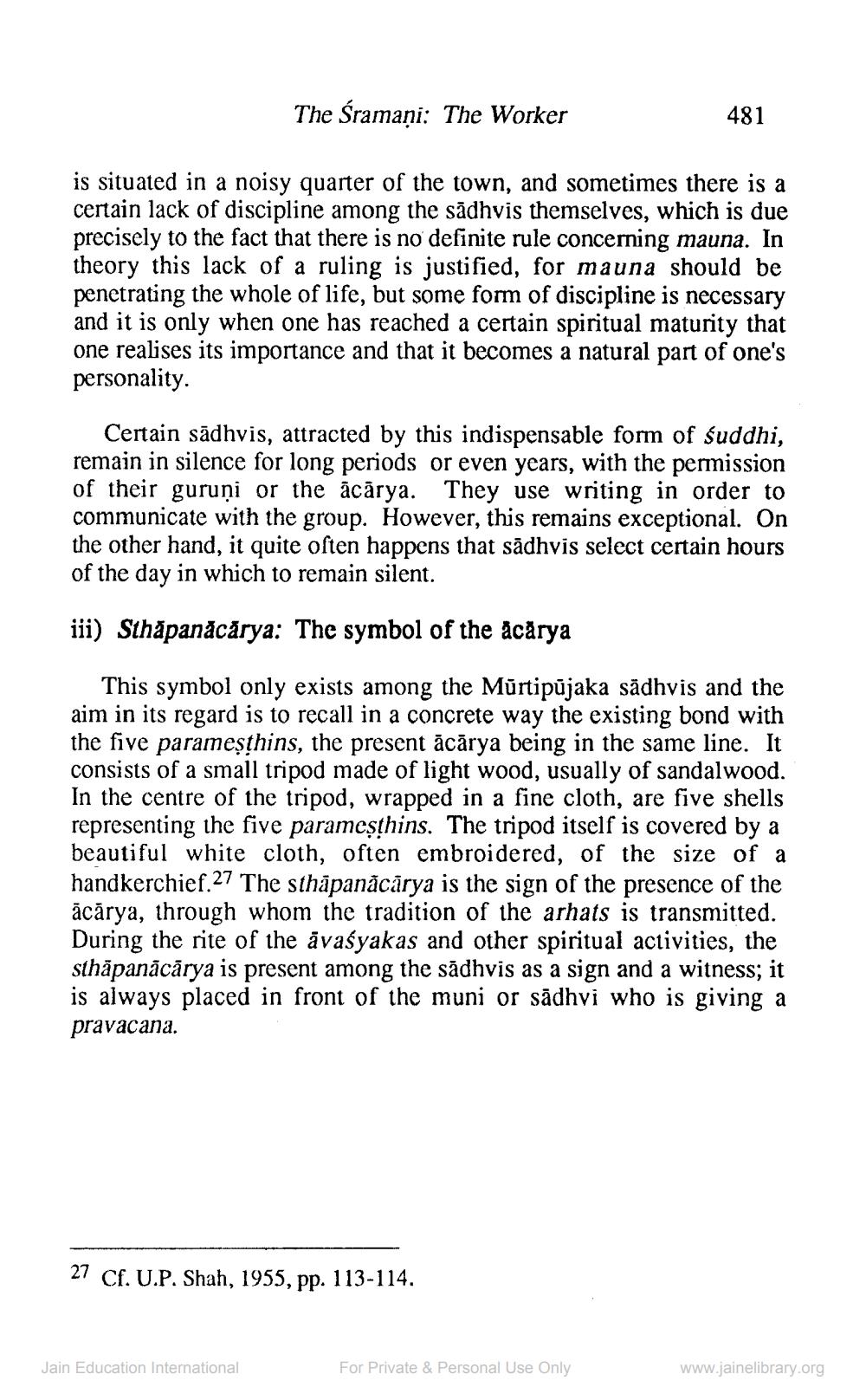________________
The Šramaņi: The Worker
481
is situated in a noisy quarter of the town, and sometimes there is a certain lack of discipline among the sādhvis themselves, which is due precisely to the fact that there is no definite rule concerning mauna. In theory this lack of a ruling is justified, for mauna should be penetrating the whole of life, but some form of discipline is necessary and it is only when one has reached a certain spiritual maturity that one realises its importance and that it becomes a natural part of one's personality.
Certain sādhvis, attracted by this indispensable form of suddhi, remain in silence for long periods or even years, with the permission of their guruņi or the ācārya. They use writing in order to communicate with the group. However, this remains exceptional. On the other hand, it quite often happens that sādhvis select certain hours of the day in which to remain silent
iii) Sthāpanācārya: The symbol of the acārya
This symbol only exists among the Murtipūjaka sādhvis and the aim in its regard is to recall in a concrete way the existing bond with the five parameșthins, the present ācārya being in the same line. It consists of a small tripod made of light wood, usually of sandalwood. In the centre of the tripod, wrapped in a fine cloth, are five shells representing the five parameşthins. The tripod itself is covered by a beautiful white cloth, often embroidered, of the size of a handkerchief.27 The sthāpanācārya is the sign of the presence of the ācārya, through whom the tradition of the arhats is transmitted. During the rite of the avaśyakas and other spiritual activities, the sthāpanācārya is present among the sădhvis as a sign and a witness; it is always placed in front of the muni or sādhvi who is giving a pravacana.
27 Cf. U.P. Shah, 1955, pp. 113-114.
Jain Education International
For Private & Personal Use Only
www.jainelibrary.org




